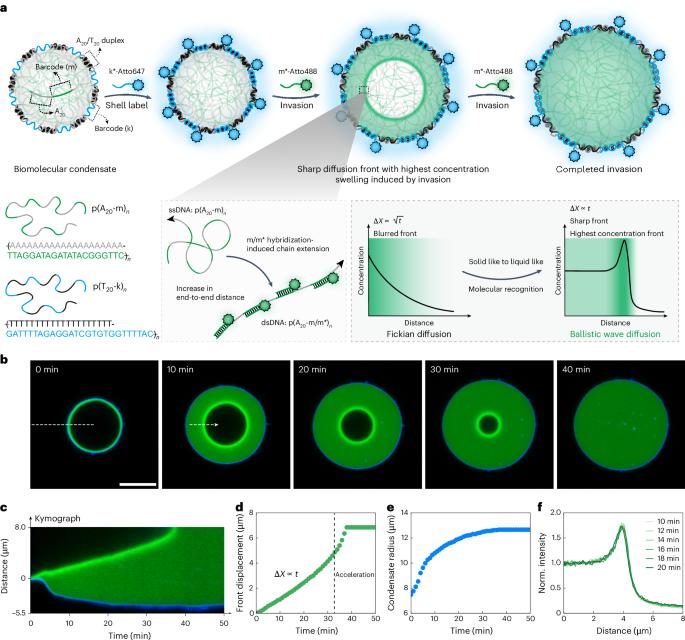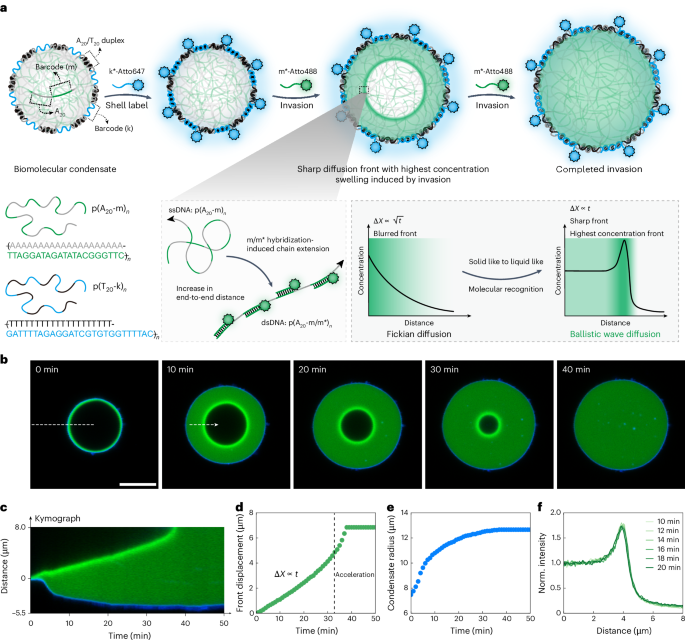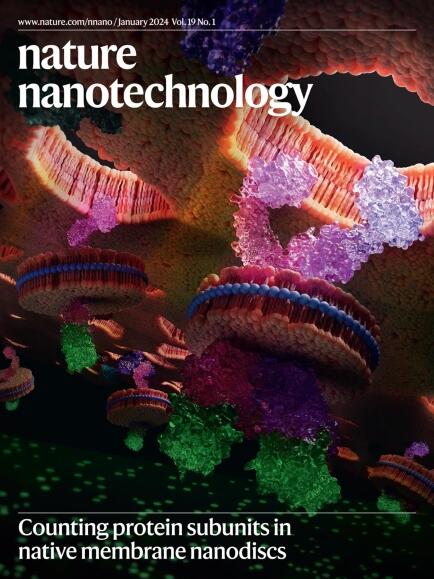生物分子凝聚体的弹道扩散前沿
IF 34.9
1区 材料科学
Q1 MATERIALS SCIENCE, MULTIDISCIPLINARY
引用次数: 0
摘要
细胞中的生物分子凝聚物通过分子识别富集分子,从而划分重要过程。然而,它仍然是难以捉摸的运输是如何发生在生物分子凝聚,以及它是如何与他们的动态和/或粘弹性状态。我们表明,分子在DNA模型凝聚体中的传输不遵循经典的菲克扩散,它有一个模糊的前面与时间依赖的平方根。相比之下,我们发现了一种新的传输类型,其具有随时间线性传播的超尖锐锋。我们的数据表明,这种超尖锐的弹道扩散锋源于分子识别和凝聚态性质的捕获到动态转变。这种扩散机制是生物分子凝聚体中化学动力学和凝聚动力学相互交织作用的结果。我们相信我们的理解将有助于更好地解释和调整合成凝聚系统的动力学和特性以及生物功能。本文章由计算机程序翻译,如有差异,请以英文原文为准。


Ballistic diffusion fronts in biomolecular condensates
Biomolecular condensates in cells compartmentalize vital processes by enriching molecules through molecular recognition. However, it remains elusive how transport occurs in biomolecular condensates and how it relates to their dynamic and/or viscoelastic state. We show that the transport of molecules in DNA model condensates does not follow classical Fickian diffusion, which has a blurry front with a square root of time dependence. By contrast, we identify a new type of transport with an ultrasharp front that propagates linearly with time. Our data reveal that this ultrasharp ballistic diffusion front originates from molecular recognition and an arrested-to-dynamic transition in the condensate properties. This diffusion mechanism is the result of intertwining chemical kinetics and condensate dynamics on transport in biomolecular condensates. We believe that our understanding will help to better explain and tune the dynamics and properties in synthetic condensate systems and for biological functions. Adding short, complementary oligonucleotides to single-stranded DNA condensates creates a concentrated, linearly propagating, sharp diffusion front that contradicts the fuzzy concentration gradients and nonlinear kinetics typical of Fickian diffusion.
求助全文
通过发布文献求助,成功后即可免费获取论文全文。
去求助
来源期刊

Nature nanotechnology
工程技术-材料科学:综合
CiteScore
59.70
自引率
0.80%
发文量
196
审稿时长
4-8 weeks
期刊介绍:
Nature Nanotechnology is a prestigious journal that publishes high-quality papers in various areas of nanoscience and nanotechnology. The journal focuses on the design, characterization, and production of structures, devices, and systems that manipulate and control materials at atomic, molecular, and macromolecular scales. It encompasses both bottom-up and top-down approaches, as well as their combinations.
Furthermore, Nature Nanotechnology fosters the exchange of ideas among researchers from diverse disciplines such as chemistry, physics, material science, biomedical research, engineering, and more. It promotes collaboration at the forefront of this multidisciplinary field. The journal covers a wide range of topics, from fundamental research in physics, chemistry, and biology, including computational work and simulations, to the development of innovative devices and technologies for various industrial sectors such as information technology, medicine, manufacturing, high-performance materials, energy, and environmental technologies. It includes coverage of organic, inorganic, and hybrid materials.
 求助内容:
求助内容: 应助结果提醒方式:
应助结果提醒方式:


